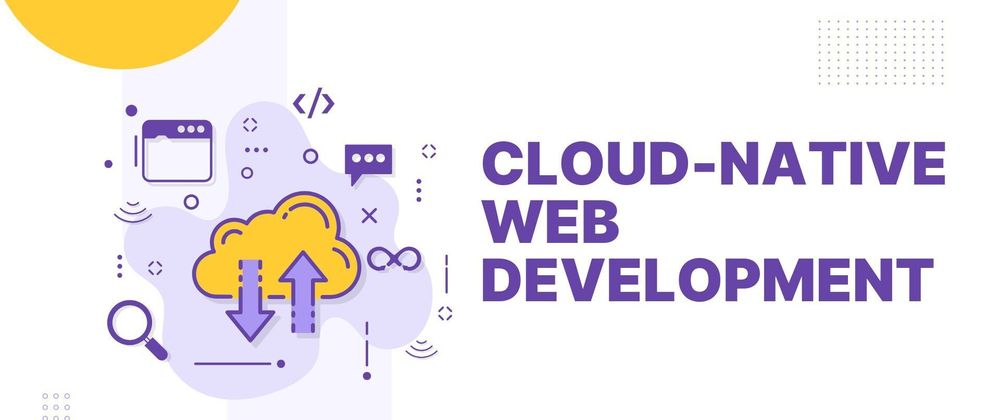Modern businesses depend on web applications for sales, customer engagement, collaboration, and service delivery. But in 2025, the expectations are higher than ever—applications must be fast, reliable, and capable of handling unpredictable growth. Enterprises can no longer rely on static, monolithic systems that buckle under pressure. Instead, the future belongs to cloud-native web development.
Cloud-native is not simply about hosting software in the cloud. It’s a complete philosophy of designing, building, and managing applications so they thrive in elastic, distributed, and dynamic environments. It emphasizes microservices, containerization, DevOps culture, and continuous delivery pipelines, making it the go-to approach for businesses that prioritize scalability and agility.
This blog explores what cloud-native web development is, why scalability is its cornerstone, and the best practices businesses should follow to build reliable, high-performing digital products.
What is Cloud-Native Web Development?
Cloud-native web development is the practice of building applications specifically for cloud environments, where infrastructure is elastic and designed to scale. Rather than retrofitting existing systems to run in the cloud, cloud-native apps are created from the ground up with scalability and resilience in mind.
Core Principles
Microservices – Breaking apps into modular, independently deployable services.
Containers – Packaging apps with dependencies for consistency across environments.
Orchestration – Using Kubernetes and similar tools to automate scaling and deployment.
DevOps culture – Merging development and operations for rapid, reliable delivery.
Continuous integration and delivery (CI/CD) – Automating deployment pipelines for faster releases.
*Why Scalability Matters
*
Scalability is the ability of an application to handle growing workloads without compromising performance. For digital businesses, it’s a matter of survival.
Customer expectations – Users demand seamless experiences with no downtime.
Unpredictable traffic – Viral content, global campaigns, or seasonal sales can spike demand.
Global audiences – Enterprises need to serve users across multiple geographies.
Cost efficiency – Elastic scaling means paying only for resources used.
Without scalability, even feature-rich applications risk collapsing during high-demand periods, leading to revenue loss and poor customer experience.
Best Practices for Cloud-Native Scalability
Let’s explore proven strategies that ensure applications remain scalable and reliable.
1. Adopt Microservices Architecture
Instead of building monolithic systems, break apps into smaller, loosely coupled services. Each microservice handles a specific function—payments, authentication, or notifications.
Why it helps: You can scale only the components under pressure instead of scaling the entire app.
Tip: Use lightweight APIs or event-driven communication between services.
2. Use Containers and Kubernetes
Containers package applications with dependencies, ensuring portability and consistency. Kubernetes orchestrates these containers, managing scaling and deployment automatically.
Why it helps: Faster deployment and simpler scaling across cloud providers.
Tip: Combine Kubernetes with Helm charts for reusable deployment templates.
3. Automate Infrastructure with IaC
Infrastructure as Code (IaC) allows developers to define infrastructure in code, enabling automation and consistency.
Why it helps: Eliminates manual provisioning, reduces errors, and accelerates deployments.
Tip: Popular tools include Terraform, Pulumi, and AWS CloudFormation.
4. Implement Auto-Scaling
Auto-scaling adjusts resources in real time based on demand.
Why it helps: Prevents over-provisioning and ensures performance during spikes.
Tip: Use horizontal scaling (adding more nodes) for resilience rather than vertical scaling (upgrading single nodes).
5. Design for Failure and Resilience
In cloud environments, failures are inevitable. Designing for resilience ensures that partial outages don’t disrupt users.
Why it helps: Increases uptime and user trust.
Tip: Build redundancy, failover mechanisms, and load balancing into your system.
6. Embrace CI/CD Pipelines
CI/CD automates testing, integration, and deployment, ensuring reliable and faster updates.
Why it helps: Reduces downtime and human error while improving agility.
Tip: Tools like GitLab CI, GitHub Actions, or Jenkins are widely adopted.
7. Optimize APIs
Microservices rely on APIs, making them critical to performance.
Why it helps: Poor API performance can cripple the whole system.
Tip: Use API gateways for authentication, throttling, and monitoring.
8. Monitor and Log Everything
Visibility into system performance is essential for identifying bottlenecks before they become major issues.
Why it helps: Enables proactive scaling and performance tuning.
Tip: Tools like Prometheus, Grafana, and Datadog offer real-time insights.
9. Use Content Delivery Networks (CDNs)
CDNs cache and serve content from servers closer to the user.
Why it helps: Reduces latency and improves global performance.
Tip: Leverage providers like Cloudflare, Akamai, or AWS CloudFront.
10. Prioritize Security at Scale
As you scale, security must scale too.
Why it helps: Protects sensitive data and prevents large-scale breaches.
Tip: Use zero-trust security models, API-level protections, and compliance frameworks.
Business Benefits of Cloud-Native Scalability
When businesses follow these practices, the results are clear:
Cost savings through resource optimization.
High availability with built-in resilience and redundancy.
Better customer experiences thanks to fast and reliable apps.
Faster innovation with quicker release cycles.
Future-proofing applications for long-term growth.
Real-World Success Stories
Netflix: Uses microservices and Kubernetes to handle millions of simultaneous viewers.
Spotify: Runs containerized services for reliable music streaming worldwide.
Airbnb: Leverages auto-scaling to handle unpredictable booking surges.
These companies prove that scalability is not just technical—it’s a strategic advantage.
How Enterprises Can Get Started
Transitioning to cloud-native development doesn’t have to be overwhelming. Here’s a roadmap:
Audit existing architecture – Identify monolithic bottlenecks.
Choose a cloud provider – AWS, Azure, or GCP.
Adopt microservices incrementally – Start with the most critical services.
Invest in DevOps practices – Break down silos between teams.
Partner with experts – Work with a trusted web development company for guidance.
Professional partners bring the expertise needed to design and implement scalable solutions. Whether you’re a startup building your first product or an enterprise modernizing legacy systems, collaborating with a web app development company ensures a smoother transition. Similarly, enterprises often rely on a specialized web application development company that offers end-to-end consulting, engineering, and migration support. With professional web app development services and holistic web development services, organizations can confidently adopt cloud-native practices while minimizing risks.
Conclusion
Scalability is no longer optional—it’s the foundation of competitive advantage in the digital economy. Cloud-native web development provides the tools, architecture, and culture required to build applications that can adapt, grow, and thrive under any demand.
By adopting best practices such as microservices, containerization, CI/CD, monitoring, and security-first design, businesses can ensure their web applications are ready for the challenges of tomorrow. Cloud-native isn’t just a technology shift; it’s a mindset that transforms how companies innovate, deliver, and scale.
In 2025 and beyond, the enterprises that embrace cloud-native scalability will be the ones setting industry standards—and leaving their competition behind.




Top comments (0)